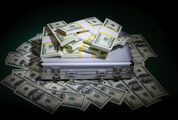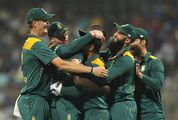SOMETHING that caught my eye in the Norman Goodfellows catalogue was bottle of whisky going for half-a-million rand.
The ad for Glenfiddich 50-year-old whisky at R499,999 a bottle is what behavioural economists call an "anchor". Its purpose is to make the 15-year-old Glenfiddich to the left for R719.90 and the 18 year-old Chivas above for R749 look affordable.
Successful stores use exorbitantly priced items to create a mixture of anger and unhappiness, William Poundstone wrote in his book on behavioural economics titled Priceless.
"Upper-middle-class consumers are angry because they can’t afford the gear featured in the store and worn by celebrities. The knee-jerk reaction is to get happy by buying something else," Mr Poundstone wrote in a chapter titled Shilling for Prada.
Mr Poundstone quotes psychologist Paco Underhill — author of Why We Buy: The Science of Shopping, and Call of the Mall: The Geography of Shopping — saying this is a selling strategy that goes back to the 17th century. "You sold one thing to the king, but everyone in court had to have a lesser one. There’s the $500 bag in the window, and what you walk away with is the T-shirt."
Seeing an exorbitantly priced branded item on display convinces us someone must be paying that kind of money, else why would it be offered? But that is not necessarily the correct conclusion. Often only one or two of a luxury brand’s ultra-expensive products are ever made, and the manufacturer does not expect to actually sell them. Their function is to help sell cheaper items carrying the same brand. They are regarded as marketing tools to be displayed at flagship stores and loaned to celebrities so that pictures of them appear in gossip magazines.
"Eva Longoria was photographed carrying a Coach ‘Miranda’ bag in hot blue python skin! Whether she paid list for it is beside the point," Mr Poundstone wrote.
Studies by behavioural economists have found this trick retailers use to contrast reasonably priced items by placing it next to exorbitantly priced items can double the sales of reasonably priced items. That none of the exorbitantly priced items sells does not matter as long as overall sales improve.
A scary thing about imprinting a higher number in someone’s head is it subliminally gets them to pay a higher price. Massachusetts Institute of Technology professor Drazen Prelec did an experiment with his MBA students where he asked them to first jot down the last two digits of their social security numbers before they completed a list of what they would be willing to pay for bottles of wine, cordless mice and other stuff.
Asked if writing down the last two digits of their social security numbers affected their bidding prices, the students said "No way!". But the results showed those students with social security numbers in the 80-99 range bid two to three times higher prices on average than those whose numbers were in the 00-19 range.
Back to the Norman Goodfellows catalogue. There is a tie for cheapest items on the whisky pages at R139.90 for either a bottle of J&B or a Ballantine’s gift pack which includes two glasses. It turns out the cheapest items also serve an important function in retail anchoring.
"When consumers are uncertain, they shy away from the most expensive item offered or the least expensive; the highest quality or the lowest quality; the biggest or the smallest. Most favour something in the middle. Ergo, the way to sell a pair of $800 shoes is to display some $1,200 shoes next to them," Mr Poundstone wrote.




















Data supplied by Profile Data
Data supplied by Profile Data
Data supplied by Profile Data
Data supplied by Profile Data